Dreaming of a lightweight road bike that zips up climbs and feels lively on sprints, but your budget screams "reality check"? Good news: Performance doesn't have to cost a fortune. Bikes like the Trifox SDY20 prove you can find affordable speed machines that defy the "cheap = heavy" stereotype.
The Lightweight, Low-Cost Formula:
The secret lies in smart engineering and direct-to-consumer models. Brands like Trifox cut out middlemen and leverage efficient carbon frame manufacturing to deliver impressive packages:
1. Carbon is Key (Even on a Budget): The SDY20's core is its full monocoque carbon fiber frame and fork. This is the game-changer. Carbon offers an exceptional strength-to-weight ratio, providing that coveted stiff-yet-compliant ride feel crucial for efficient power transfer and comfort, all while keeping weight remarkably low (around 9kg / 19.8lbs!). Finding carbon at this price point is rare.
2. Strategic Alloy Savings: While the frame/fork deliver the weight savings and performance, components like the alloy handlebar, stem, and seatpost keep costs down without drastically adding weight or sacrificing core functionality. It’s a smart trade-off.
3. Performance-Oriented Geometry: A lightweight frame is wasted if the bike doesn't feel fast. The SDY20 features an aggressive yet manageable race geometry, ensuring responsive handling and stability when you push the pace.
4. Reliable Shifting: Equipped with a Shimano Sora or Sensah Team Pro 2x9/10-speed groupset, you get precise, dependable shifting. It might not be top-tier, but it’s proven, smooth, and perfectly matched to the bike's performance intent.
5. Confident Stopping: Mechanical disc brakes offer consistent, powerful stopping in all conditions, outperforming rim brakes, especially in the wet – a significant safety and performance boost.
Why the Trifox SDY20 Stands Out:
The SDY20 perfectly embodies this value proposition:
- True Carbon Performance: The heart of the bike is lightweight, responsive carbon.
- Sub-10kg Weight: Achieves a remarkably low weight for its price class.
- Modern Features: Internal cable routing (partial) for a clean look, disc brakes, and thru-axles (depending on model year) add up-to-date performance and reliability.
- Direct Savings: By selling directly, Trifox passes significant savings onto you.

Don't equate "affordable" with "slow and heavy." The Trifox SDY20 demonstrates that with a carbon frame/fork core and intelligent component selection, you can get a genuinely lightweight, performance-ready road bike without obliterating your budget.
It's the perfect entry into faster riding or a fantastic lightweight option for the value-conscious enthusiast. Fly up climbs, feel the speed – without the premium price tag.
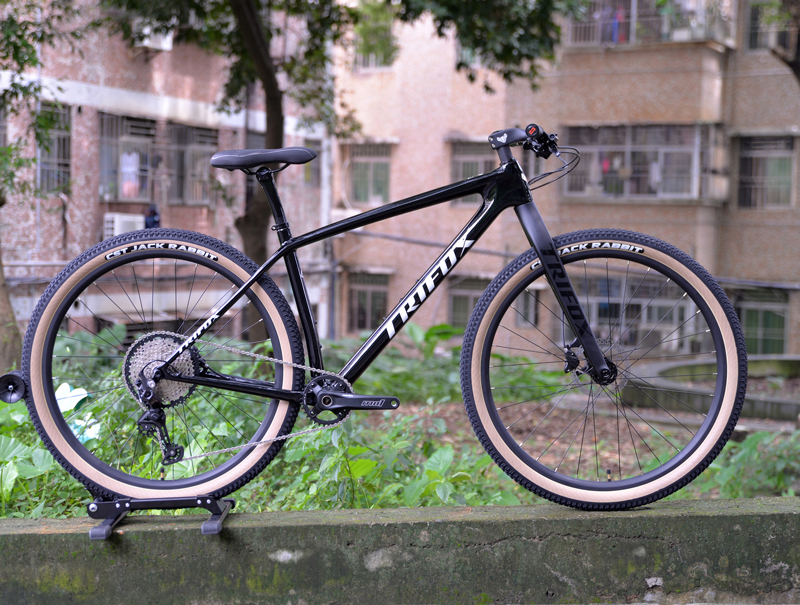
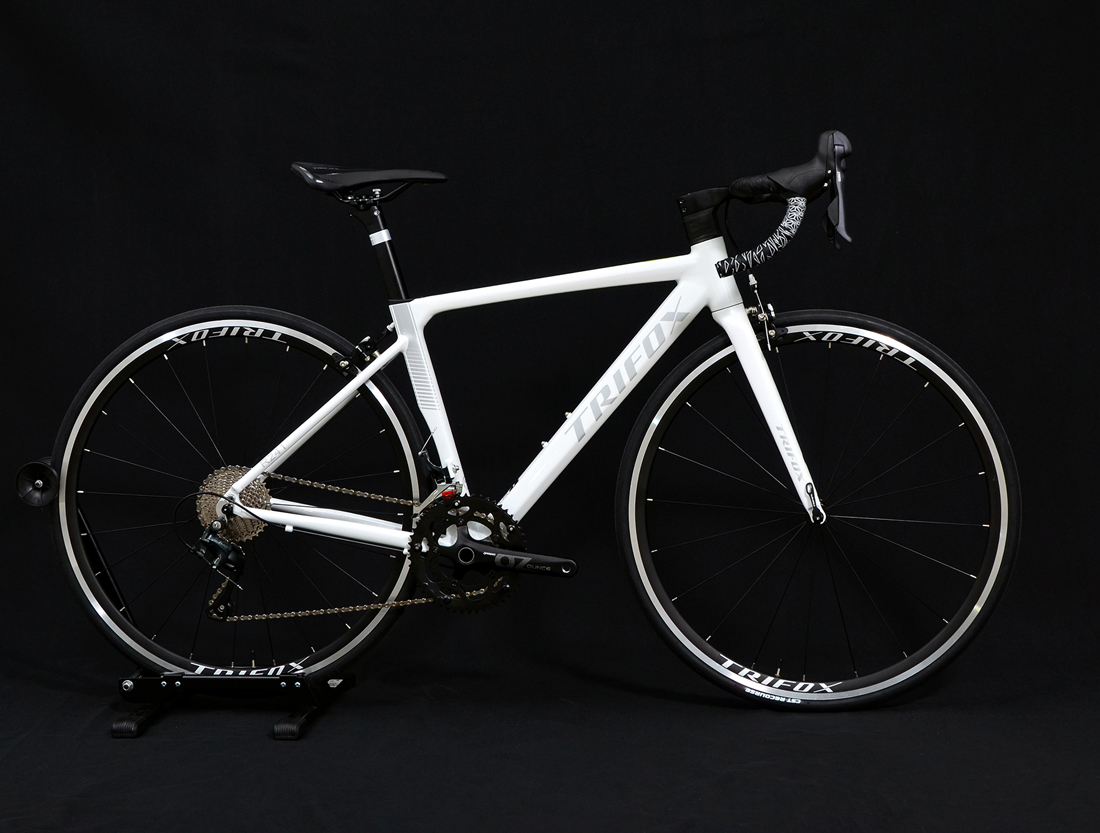
Forget squeezing rubber blocks onto your wheel rims! Modern bikes like the Trifox R241 Road Bike increasingly rely on disc brakes for superior stopping power. But how do these compact, rotor-equipped systems actually work? It's simpler physics than you might think.
The Core Components:
1. The Rotor (Disc): This is the metal (usually steel) disc bolted firmly to your wheel hub. It spins with the wheel.
2. The Caliper: Mounted near the hub on your frame (front) or fork/seatstay (rear), this housing contains the brake pads.
3. The Brake Pads: These friction material blocks sit inside the caliper, positioned on either side of the rotor.
4. The Actuator: This is your brake lever and the system it pulls – either a cable (mechanical disc) or hydraulic fluid (hydraulic disc). The Trifox R241 features mechanical disc brakes.
The Magic Happens When You Squeeze:
1. Lever Action: Pulling the brake lever initiates the stopping force.
2. Force Transmission:
- Mechanical (Cable): The lever pulls a cable. This cable runs to the caliper and directly moves a mechanism (like a piston or lever arm) inside it.
- Hydraulic: The lever pushes a piston in a master cylinder, forcing hydraulic fluid through a sealed hose to the caliper.
3. Caliper Activation: Inside the caliper, the transmitted force (cable pull or hydraulic pressure) pushes one or more pistons.
4. Pad Squeeze: These pistons press the brake pads inward from both sides, clamping them firmly onto the spinning rotor.
5. Friction = Stopping Power: The immense friction generated between the pads and the rotor creates drag. This drag acts directly on the wheel hub, rapidly slowing down the rotation of the wheel and, therefore, the bike.
Key Advantages Over Rim Brakes:
- Consistent Performance in All Conditions: Water, mud, or grime on the rim? Irrelevant! Discs shed contaminants easily, offering reliable braking in rain or on dusty trails. The Trifox R241's discs ensure confidence no matter the weather.
- Better Modulation & Power: Discs allow finer control over braking force ("modulation") and typically provide stronger overall stopping power than rim brakes, especially when wet or under heavy load.
- Reduced Rim Wear: Braking force is applied to a dedicated rotor, not your expensive wheel rims. This eliminates rim wear from braking, prolonging wheel life.
- Compatibility with Carbon Rims/Aero Wheels: Discs are essential for carbon rims (which can't handle rim brake heat) and work perfectly with deep-section aero wheels. The Trifox R241's carbon fork benefits hugely here.
- True Wheels: Since braking force isn't applied to the rim sidewalls, minor wheel wobbles (true issues) affect braking performance far less.
Mechanical vs. Hydraulic (Like the Trifox R241's S-Ride):
- Mechanical: Uses cables. Generally simpler, easier to maintain trailside, and more affordable. Can require slightly more lever effort and periodic cable tension adjustment. A solid, reliable choice like the S-Ride system on the R241.
- Hydraulic: Uses fluid. Offers self-adjusting pads, typically requires less finger effort, and provides exceptional modulation and feel. Needs less frequent maintenance but bleeding the system is more complex.
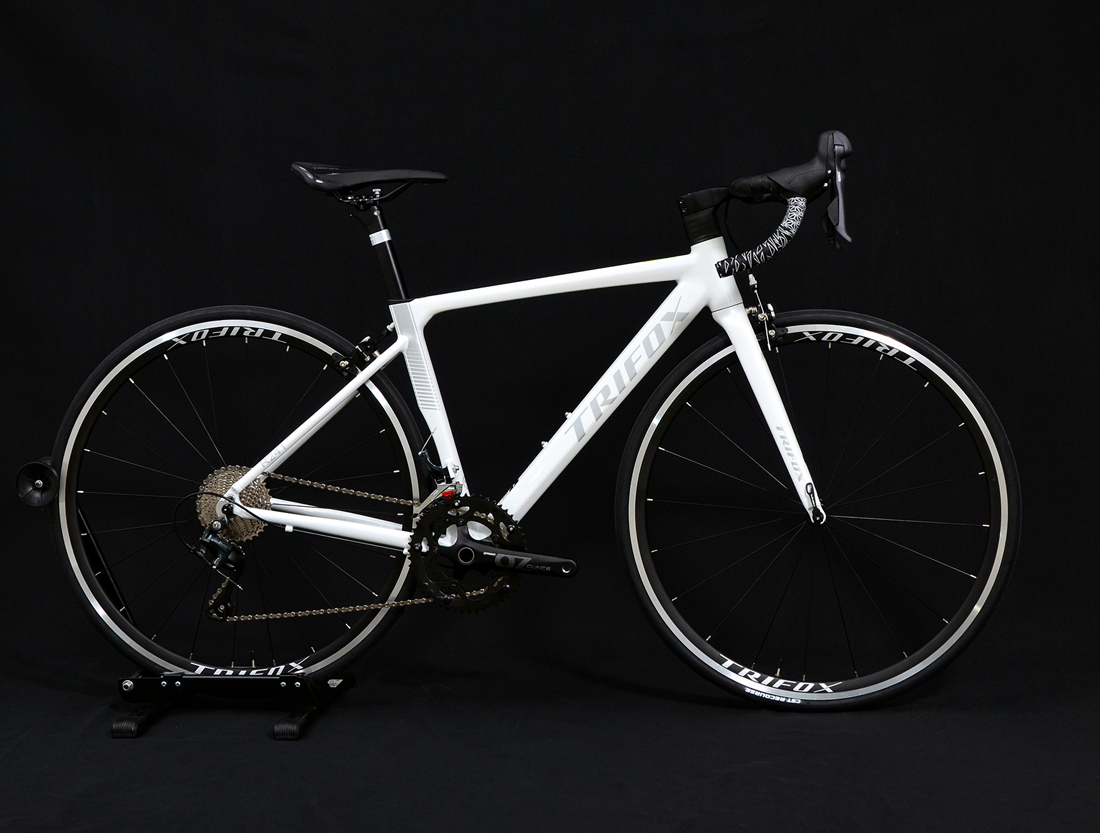
Disc brakes transform lever pull into powerful clamping friction directly at the wheel hub via a rotor. This system delivers consistent, powerful, and controllable stopping in diverse conditions, protects your rims, and unlocks modern frame and wheel designs – precisely why performance-oriented bikes like the Trifox R241 Road Bike rely on them. It's a fundamental upgrade for safety and ride quality.
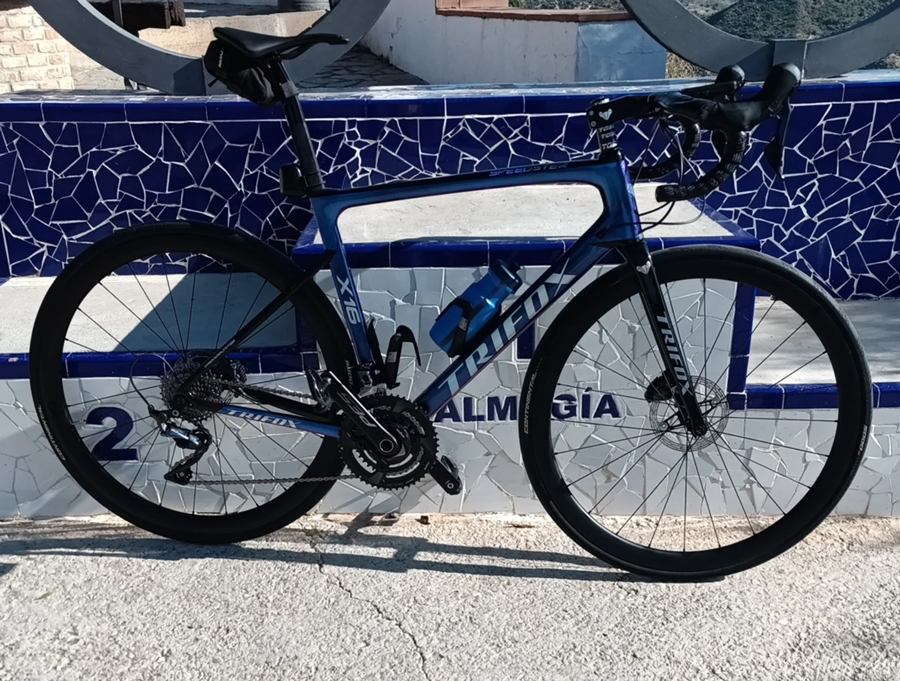
In the fast-paced world of road cycling, every gram matters. For riders chasing speed, efficiency, and climbing prowess, the quest for the lightest bike is never-ending. Enter the Trifox X16, a marvel of engineering poised to dominate 2025 as one of the world's lightest road bikes. Let’s dive into what makes this machine a game-changer.
Featherlight Frame, Uncompromised Strength
At the heart of the X16 lies its ultra-lightweight carbon fiber frame. Trifox's advanced monocoque construction uses high-modulus carbon to shed weight without sacrificing stiffness or durability. The result? A bike that accelerates like a rocket and climbs with effortless agility, yet remains robust enough for punishing races or long-distance rides.
Premium Components for Peak Performance
The X16's weight savings extend beyond the frame. It's equipped with a Shimano Dura-Ace R9200 groupset, renowned for its crisp shifting and feathery weight. Pair this with Trifox's own carbon wheelset—1,350 grams of aerodynamic efficiency—and you’ve got a bike that’s as responsive as it is swift. Even the cockpit gets the lightweight treatment, featuring an integrated carbon handlebar-stem combo that trims grams while enhancing aerodynamics.
Aero Design Meets Comfort
Lightweight doesn't mean sacrificing comfort. The X16's frame incorporates strategic tube shaping to slice through wind, while its tuned compliance absorbs road vibrations. Whether you're sprinting on smooth tarmac or tackling cobbled climbs, this bike balances speed and ride quality seamlessly.
Why the Trifox X16 Stands Out
In a market flooded with lightweight contenders, the X16 shines with its balance of affordability and elite performance. Many sub-7kg bikes come with five-figure price tags, but Trifox delivers pro-level specs at a fraction of the cost. It’s a top pick for competitive cyclists and enthusiasts alike who refuse to compromise on weight or budget.
Ready to experience the future of road biking? The Trifox X16 redefines what’s possible in 2025. Learn more or secure yours here: Trifox X16. Lighten your ride, elevate your speed—this is the ultimate machine for those who chase horizons.
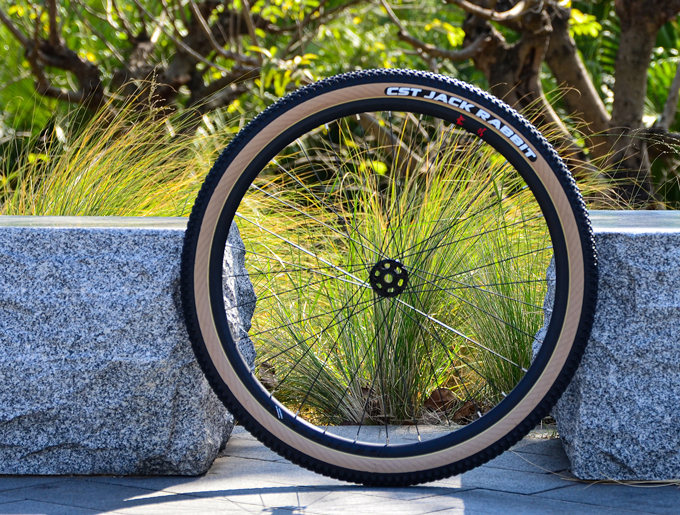
In mountain biking, wheels are the unsung heroes—bearing loads, absorbing shocks, and translating power. The Trifox Alloy Disc Brake Wheels (WM823 Boost) masterfully balance durability, affordability, and cutting-edge specs, proving you don’t need carbon to conquer modern trails.
Aluminum alloy remains a gold standard for riders prioritizing resilience and value. Unlike carbon, alloy rims withstand rock strikes, crashes, and rough terrain with minimal damage, making them ideal for aggressive cross-country or trail riding. Trifox’s WM823 rims pair this toughness with a weight-conscious design, light enough for climbs yet robust for descents.
Disc Brakes: Precision Meets Power
Disc brakes are non-negotiable in modern cycling, offering consistent stopping power in mud, rain, or dust. These wheels feature 6-bolt disc hubs, ensuring compatibility with Shimano, SRAM, or Magura systems. Alloy rims also avoid carbon’s heat buildup during long descents, reducing brake fade and boosting safety.
Engineered for Modern Trails
The WM823 Boost wheels embrace today's standards:
- 148x12mm Boost Rear Spacing: Enhances wheel stiffness, tire clearance (up to 2.6”), and drivetrain alignment.
- Tubeless-Ready Rims: Seal punctures instantly and run lower pressures for grip without pinch flats.
- Double-Wall Construction: Balances impact resistance and weight savings.
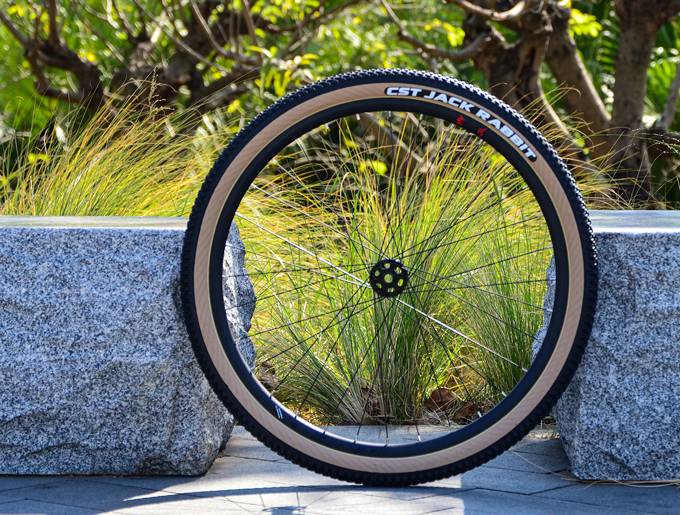
Whether you're building a hardtail or upgrading a full-suspension rig, the Trifox WM823 Boost wheels deliver a rare trifecta: bombproof durability, trail-ready performance, and budget-friendly pricing. Ready to elevate your ride? Explore the set here and tackle technical terrain with confidence—no compromises required.
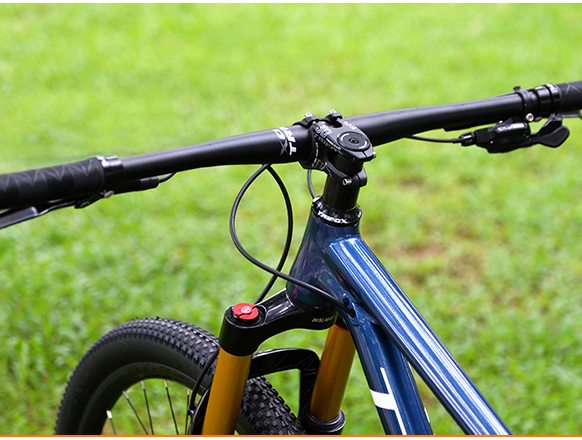
Cyclists love to tweak their rides, and one common question is whether you can swap flat handlebars for sleek, aerodynamic drop bars. The short answer? Yes—but it’s not always straightforward.
Why Go Drop Bar?
Drop bars aren’t just for road racers. They offer:
- Aerodynamics: Lower hand positions reduce wind resistance for faster rides.
- Versatility: Multiple grip options reduce fatigue on long journeys.
- Style: They give bikes a sporty, performance-oriented look.
The Challenges of Conversion
Swapping bars isn’t as simple as unscrewing one set and bolting on another. Key considerations include:
- Component Compatibility: Flat-bar bikes use different shifters, brake levers, and derailleurs than drop-bar setups. You’ll likely need new integrated brake/shifter units (like Shimano STI), which can be costly.
- Geometry Tweaks: Drop bars are narrower and may require a shorter stem to maintain comfortable reach.
- Cable Adjustments: Brake and derailleur cables may need rerouting or replacing to fit the new handlebar shape.
Enter Carbon Upgrades
If you're committed to the conversion, upgrading to carbon handlebars—like Trifox’s lightweight, vibration-damping options—can enhance performance. Carbon bars reduce weight, improve stiffness for responsive steering, and absorb road chatter, making them ideal for riders prioritizing speed and comfort.
Step-by-Step Conversion Tips
1. Assess Compatibility: Confirm your bike’s stem diameter (most are 31.8mm) and whether your frame can accommodate drop-bar cable routing.
2. Invest in Components: Budget for drop-bar shifters, brake levers, and compatible derailleurs. Consider bar tape for grip and aesthetics.
3. Seek Professional Help: If DIY mechanics feel daunting, a bike shop can ensure seamless installation and safety checks.
Is It Worth It?
For casual riders, the cost and effort may outweigh the benefits. But for enthusiasts craving a road bike feel or upgrading to carbon components like Trifox’s handlebars, the transformation can breathe new life into your ride.
Converting flat bars to drop bars is possible, but it’s a project best suited for dedicated tinkerers or those willing to invest in professional help. With the right parts—and high-performance upgrades like carbon handlebars—you can unlock a faster, more versatile ride.
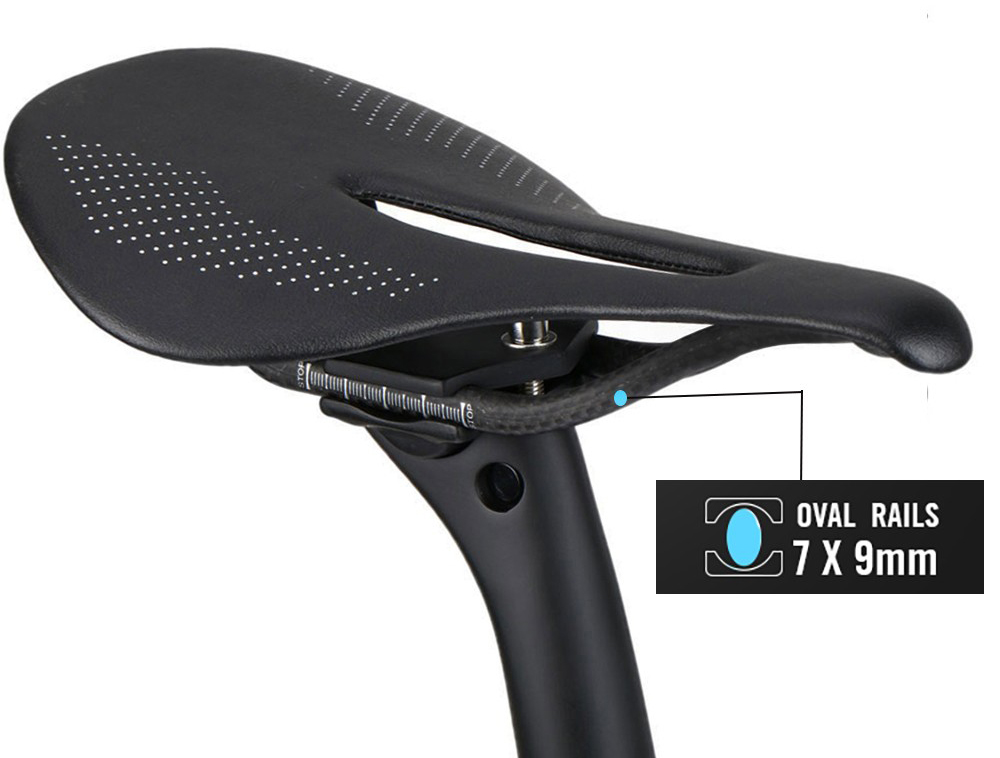
Long-distance cycling demands endurance, stamina, and one often-overlooked essential: a saddle that won’t leave you wincing. Whether you’re tackling century rides, bikepacking adventures, or daily commutes, the right bike saddle can mean the difference between euphoria and agony. Here's why upgrading your saddle matters and how to choose the best one for your ride.
Why Saddle Choice Matters
Your saddle is your primary contact point with the bike, and poor design leads to numbness, chafing, and soreness—issues that derail long rides. A quality saddle combines three elements:
1. Ergonomic Shape: Curves that match your sit bones and relieve soft-tissue pressure.
2. Strategic Padding: Enough cushioning to absorb vibrations without feeling bulky.
3. Ventilation: Channels or cutouts that reduce heat buildup and moisture.
The Carbon Fiber Advantage
Carbon fiber saddles, like Trifox's offerings, elevate comfort with cutting-edge engineering:
- Lightweight Strength: Carbon shells and rails shed grams while maintaining stiffness for efficient power transfer.
- Targeted Flex: Carbon’s natural vibration-damping properties reduce road buzz without sacrificing responsiveness.
- Durability: Resistant to weather, sweat, and wear, ensuring longevity for high-mileage riders.
Trifox Carbon Saddles: Built for the Long Haul
Trifox's range caters to diverse riding styles with features like:
- Hollow-Tech Design: A central cutout minimizes perineal pressure and enhances airflow.
- Titanium Rails: Lightweight yet robust, compatible with most seat posts.
- Adaptive Padding: High-density foam molds to your anatomy over time, balancing support and comfort.
Who Needs a Carbon Saddle?
- Endurance Cyclists: Reduce fatigue on multi-hour rides.
- Road Racers: Prioritize weight savings and aerodynamics.
- Adventure Tourers: Seek reliability on rough terrain and varied conditions.
Finding Your Perfect Fit
1. Measure Your Sit Bones: Use a gel pad or professional fitting to determine your ideal saddle width.
2. Test Ride: Many brands offer trial periods to ensure compatibility.
3. Adjust Position: Fine-tune tilt and fore/aft alignment to optimize pressure distribution.
A carbon saddle isn't just a luxury—it's an investment in pain-free performance. By blending cutting-edge materials with ergonomic design, Trifox’s carbon saddles prove that comfort and speed aren’t mutually exclusive. Whether you’re chasing personal bests or exploring new horizons, the right saddle ensures every mile feels like a victory.
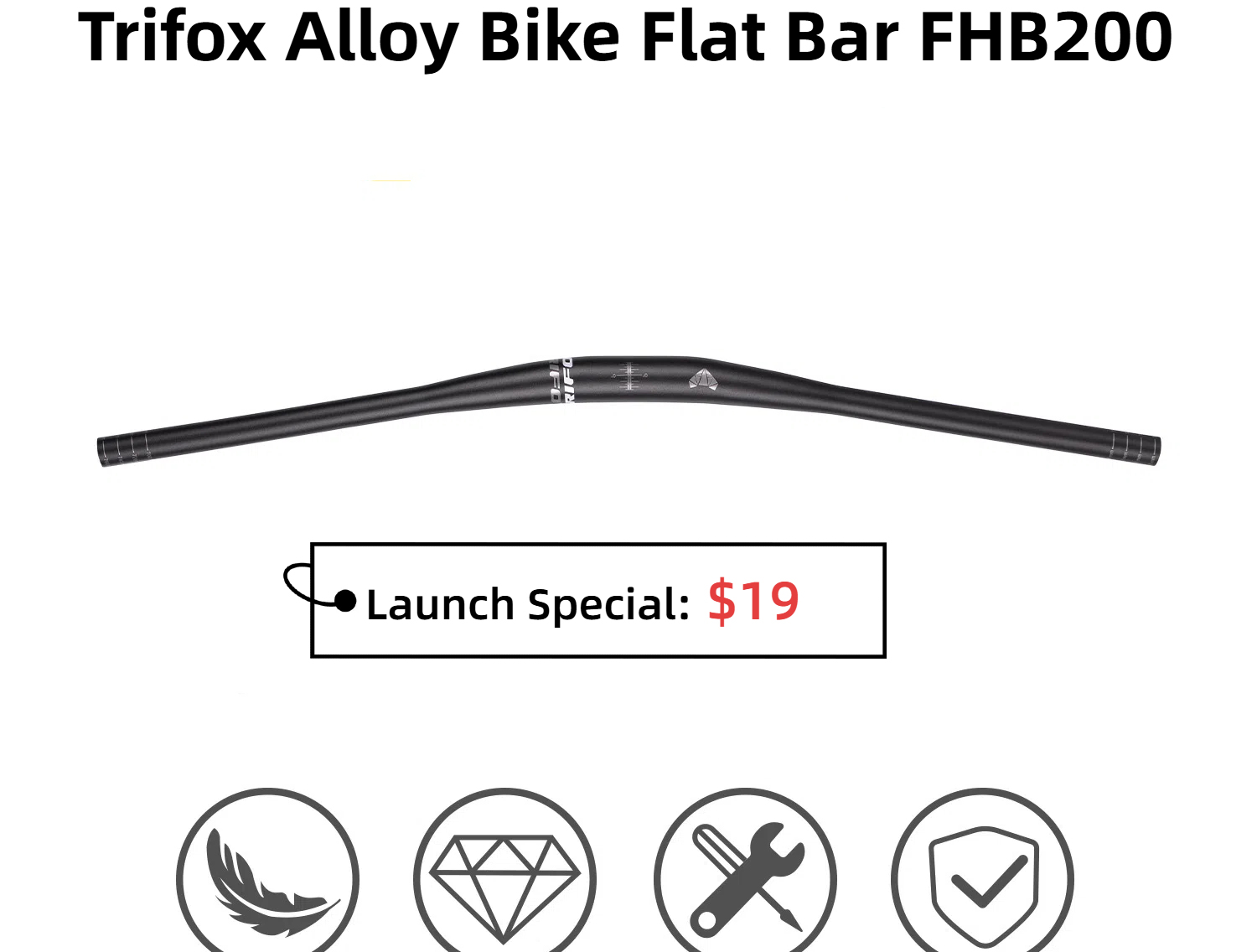
For casual riders and daily commuters, cycling isn’t just about speed—it’s about comfort, control, and reliability. Enter alloy flat bars, the unsung heroes of handlebar design that strike the perfect balance between performance and practicality. Whether you’re navigating city traffic, cruising bike paths, or tackling weekend adventures, here’s why upgrading to an alloy flat bar could transform your ride.
The Alloy Advantage: Built for Everyday Riding
Aluminum alloy handlebars have long been a favorite for their winning combination of strength, weight, and affordability. Unlike carbon fiber (which prioritizes weight savings at a premium price) or steel (which adds durability but heft), alloy offers a middle ground ideal for riders who value:
- Durability: Resistant to rust, dents, and daily wear-and-tear, alloy bars withstand potholes, curb hops, and all-weather commuting.
- Lightweight Control: At roughly 30% lighter than steel, alloy reduces fatigue on long rides without sacrificing stiffness for precise steering.
- Budget-Friendly Performance: High-quality alloy bars deliver premium features at a fraction of the cost of carbon.
Why Flat Bars Rule the Streets
Flat handlebars aren’t just for mountain bikes. Their straightforward design offers unique perks for urban and casual riding:
- Upright Comfort: A natural, relaxed posture reduces strain on your wrists, neck, and back—a lifesaver during stop-and-go traffic or leisurely cruises.
- Instant Maneuverability: The wide grip provides leverage for quick turns, dodging obstacles, and navigating tight spaces with confidence.
- Simpler Setup: No complex hoods or drops mean easy access to brakes and shifters, perfect for riders who prioritize simplicity.
The Trifox Alloy Flat Bar: Designed for Versatility
The Trifox 35mm Aluminum Alloy Flat Bar exemplifies why this style is a commuter’s dream. Key features include:
- 35mm Clamp Diameter: Boosts stiffness for responsive handling while remaining compatible with most modern stems.
- Lightweight Design: Weighing in at just 280g, it’s agile enough for quick accelerations yet robust enough for loaded panniers.
- Multi-Bike Compatibility: Works seamlessly with hybrid, MTB, or commuter bikes, making it a versatile upgrade.
- Sleek Ergonomics: A subtle rise and textured grip zones enhance comfort without compromising the flat bar's minimalist aesthetic.
Who Should Make the Switch?
- Commuters seeking a reliable, low-maintenance handlebar for daily rides.
- Hybrid Bike Owners wanting to improve control without a full overhaul.
- Leisure Riders prioritizing comfort on weekend trails or family outings.
Alloy flat bars aren't flashy, but they're the workhorses of the cycling world—durable, adaptable, and endlessly practical. By pairing affordability with performance, they empower riders to tackle diverse terrain without breaking the bank or their backs.

For mountain bikers, a carbon fork is a game-changer—offering lightweight performance, vibration-damping comfort, and razor-sharp steering precision. But high costs often put these upgrades out of reach… until now.
Carbon fiber’s magic lies in its blend of strength and featherlight weight. Unlike alloy forks, carbon absorbs trail chatter, reducing arm fatigue on rough terrain while maintaining stiffness for confident handling. Perfect for cross-country riders, commuters, or gravel adventurers seeking speed and comfort.
What Makes the Trifox Fork a Steal?
- Boost Spacing: Compatible with modern 29” MTB wheels (110x15mm axle), this fork ensures better tire clearance and stiffness for aggressive riding.
- Disc Brake Ready: Designed for flat-mount disc brakes, it delivers reliable stopping power in all conditions.
- Tapered Steerer: Enhances steering precision and durability, fitting most contemporary bike frames.
- Rigid Design: Ditch the weight and maintenance of suspension forks—ideal for riders prioritizing efficiency over rough terrain.
Who Should Upgrade?
- Budget-Conscious MTBers: Replace a heavy stock fork or upgrade an older hardtail without splurging.
- Gravel & Commuter Riders: Add carbon’s comfort to mixed-surface adventures or daily rides.
- DIY Builders: A cost-effective cornerstone for building a lightweight, high-performance rig.

Carbon forks at this price point are rare—and Trifox’s offering delivers core benefits without cutting corners. Whether you’re chasing PRs on singletrack or smoothing out city streets, this fork proves premium upgrades don’t have to break the bank.
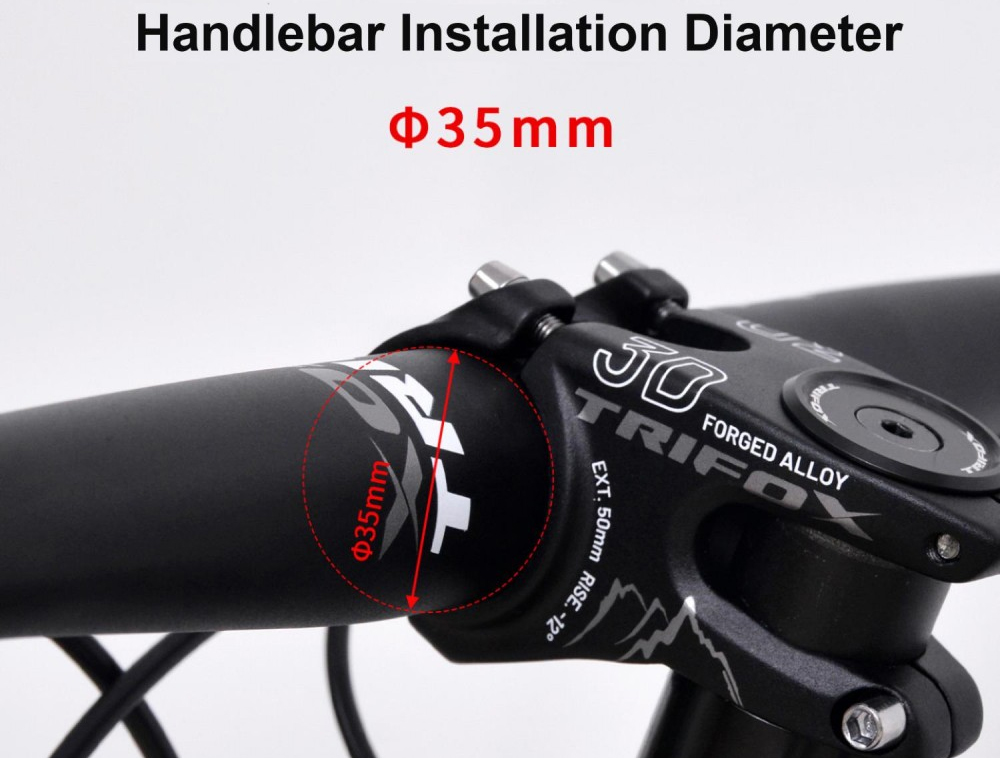
For urban cyclists, navigating crowded streets, dodging potholes, and squeezing through traffic requires agility, comfort, and control—all while maintaining enough speed to make the ride efficient.
Enter the flat bar road bike, a versatile machine that blends the best of road bikes and hybrids to dominate cityscapes and tackle adventures beyond the asphalt. Here’s why these bikes are becoming the go-to choice for riders who refuse to be confined by terrain or traffic.
Urban Agility, Redefined
Flat bar road bikes ditch the traditional drop handlebars of classic road bikes for a wider, flat handlebar setup. This simple change transforms the riding experience:
- Better Control: The upright riding position improves visibility in traffic, while the wider grip offers precise steering for weaving through tight spaces.
- Instant Braking: With brake levers and gear shifters at your fingertips, stopping power is immediate—a lifesaver in unpredictable urban environments.
- Lightweight Speed: Built with road bike DNA, these bikes feature lightweight frames and narrow tires (slightly wider than standard road bikes) for zipping past gridlock without sacrificing efficiency.
Comfort That Goes the Distance
Commuting or cruising for hours? Flat bars encourage a natural, relaxed posture that reduces strain on your wrists, neck, and back. Paired with ergonomic grips and shock-absorbing features like carbon forks or wider tires, these bikes smooth out rough pavement and cobblestones, making every ride less punishing than a traditional road bike.
Beyond the City Limits
Don't let the “city bike” label fool you. Flat bar road bikes are built to explore. Their sturdy frames and grippy tires handle gravel paths, packed trails, and countryside roads with ease. Swap slick tires for something knobbier, and suddenly your urban warrior becomes a weekend adventurer—no second bike needed.
Who Should Ride One?
- Commuters craving speed without back pain.
- Hybrid riders ready to upgrade to something lighter and faster.
- Casual adventurers who want one bike for pavement, paths, and light off-roading.
In a world where cycling needs are as diverse as the riders themselves, flat bar road bikes strike a rare balance: they're fast enough for fitness rides, nimble enough for downtown chaos, and tough enough to escape the urban grind. Whether you're sprinting to work or chasing sunset horizons, these bikes prove that versatility is the ultimate superpower.

























































